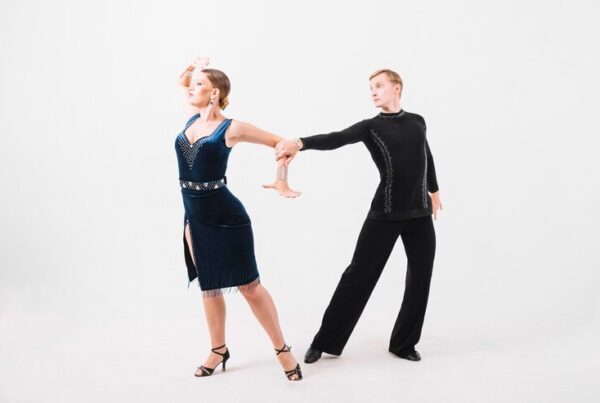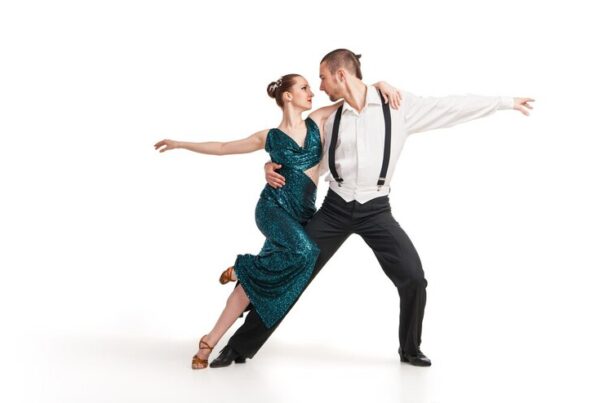
Swing dance is more than just an enjoyable form of exercise; it is an expression of joy and rhythm that has endured through generations. Originating in jazz-filled dance halls of the 1920s and 30s, swing dance brings people together through energetic steps with rich cultural histories that span decades and cultures alike.
With so many types of swing dance to explore, there’s something for everyone. From the playful Lindy Hop to the smooth West Coast Swing, and even the fast-paced Charleston, each style offers its own charm and character. Whether you’re curious about the various kinds of swing dance or looking to try a new hobby, this guide will walk you through the exciting world of swing dance styles and help you find your rhythm.
What is Swing Dance?
 Swing dance refers to a group of dance styles originating from the 1920s–1940s, set to the rhythm of jazz and swing music. Think of lively footwork and an undeniable zest!
Swing dance refers to a group of dance styles originating from the 1920s–1940s, set to the rhythm of jazz and swing music. Think of lively footwork and an undeniable zest!
The Origins of Swing Dance
Swing dance has its origins in African American communities of Harlem during the late 1920s and early 1930s, most notably at Harlem’s legendary Savoy Ballroom, where its birth took place alongside jazz music, reflecting creativity, resilience, and cultural expression of African American dancers and musicians alike.
The Evolution of Swing Dance Styles
The Role of Jazz Music in Swing Dance
Jazz music was at the core of swing dance, providing its dynamic, improvisatory soundtrack that helped to motivate dancers’ moves. Its syncopated rhythms, complex musical arrangements, infectious energy and synergistic relationship between music and dance gave rise to various types of swing dance styles that thrive today.
How Swing Dance Spread Worldwide
From its roots in Harlem, swing dance quickly captured the hearts and imagination of dancers throughout America and eventually around the globe. Big band performances and dance halls helped popularize it throughout its early decades in urban centers to small towns before eventually spreading around continents.
Popular Types (kinds) of Swing Dance
Lindy Hop
Key Features of Lindy Hop
Lindy Hop is known as the original swing dance, distinguished by athletic moves, unpredictable improvisations and playful partner interactions. Dancers perform both eight-count and 6-count steps incorporating dynamic lifts, swings and other dramatic lifts that demonstrate skillful movements to showcase creative ability and partner interactions.
Why It’s So Popular
Lindy Hop embodies the pure joy of partner dancing. Its combination of technical skill and improvisational freedom makes it endlessly exciting. The dance allows for individual expression while maintaining a strong connection between partners, making it both challenging and incredibly fun.
Charleston
Classic Charleston vs. Swing Charleston
The Charleston has two primary variations: the classic solo Charleston from the 1920s and the partnered swing Charleston that emerged later. The solo version features distinctive kicking movements and was a symbol of the rebellious flapper era, while the swing Charleston integrated more smoothly with other swing dance styles.
Signature Moves in Charleston
Key Charleston moves include the basic Charleston step (alternating kicks), the crossover, and the scissor kick. Dancers typically move with high energy, using exaggerated leg movements and playful arm motions that reflect the dance’s roots in early 20th-century social rebellion.
East Coast Swing
Beginner-Friendly Moves
East Coast Swing is often recommended for beginners due to its relatively simple six-count basic step. It features a rock step and a triple step, making it more accessible than some of the more complex swing dance styles. The movements are circular and relatively compact, making it suitable for various dance floors.
Where You’ll See East Coast Swing Today
You’ll find East Coast Swing at social dance events, ballroom dance competitions, and community dance classes. Its versatility and approachability have helped it remain popular among dancers of all skill levels.
West Coast Swing
Smooth and Modern Characteristics
West Coast Swing stands in contrast with East Coast Swing for its more relaxed yet sophisticated nature. Performed to a wider array of music genres – blues, contemporary pop, R&B – its linear dance pattern allows significant room for improvisation.
How It Stands Out from Other Styles
West Coast Swing is distinguished by its slot movement, where the follower travels back and forth along a linear path while the leader provides direction and creates space for creative variations. It’s often described as a more “slotted” and refined version of swing dance.
Balboa
A Compact Dance for Crowded Floors
Originating in Southern California during the 1930s, Balboa is a close-embrace dance perfect for crowded dance floors. Dancers maintain a close connection, with minimal upper body movement, focusing instead on intricate footwork and subtle weight shifts.
The Graceful Appeal of Balboa
Balboa is prized for its elegance and precision. It requires excellent lead-follow communication and allows dancers to create complex patterns even in a small space. Its subtlety makes it a favorite among more experienced swing dancers.
Shag
Energetic and Fun Movements
Shag is a fast-paced, high-energy swing dance style with roots in the Carolinas. It features quick footwork, syncopated rhythms, and a bouncy, upbeat character that demands both skill and stamina.
Different Styles of Shag
There are multiple variations of Shag, including Carolina Shag, St. Louis Shag, and Collegiate Shag. Each style has its own unique characteristics, but all share a common foundation of quick, intricate footwork and playful partner interactions.
Swing Dance in Modern Culture
Swing Dance Competitions and Festivals
Today, swing dance remains vibrant through numerous competitions and festivals worldwide. Events like the International Lindy Hop Championships and local swing dance weekenders keep the community active and continuously evolving.
How Swing Dance Influences Other Dance Forms
Swing dance has significantly influenced many modern dance styles, from hip-hop to contemporary partner dancing. Its principles of improvisation, musical interpretation, and partner connection can be seen in various dance forms.
Why Swing Dance is a Great Hobby
Health Benefits of Swing Dancing
Swing dance offers numerous physical benefits, including improved cardiovascular fitness, increased flexibility, enhanced coordination, and full-body workout. It’s an enjoyable way to stay active and healthy.
Social Aspects of Swing Dance
Beyond physical fitness, swing dance is a powerful social activity. It provides opportunities to meet new people, build confidence, and become part of a welcoming, inclusive community that spans generations and cultures.
Tips for Getting Started with Swing Dance
Choosing the Right Swing Dance Style
Consider your fitness level, musical preferences and personal style when selecting a swing dance style. Beginning dancers might benefit from East Coast Swing while more experienced dancers might appreciate Lindy Hop or West Coast Swing due to their intricate movements.
Finding Classes and Events Near You
Look for local dance studios, community centers, and online platforms that offer swing dance classes. Websites like jtdancestudio and local dance community forums can help you find lessons and social dance events.
Must-Have Gear for Swing Dancing
Invest in comfortable, flexible shoes with smooth soles for easy movement. Avoid rubber-soled shoes that might stick to the dance floor. Breathable, stretchy clothing that allows free movement is also essential.
FAQs
What type of swing dance would be suitable for beginners?
East Coast Swing dance style is known for being beginner-friendly due to its six-count basic step and straightforward movements that make learning the moves straightforward and accessible for newcomers.
How can I locate a swing dance community near me?
Find dance studio, community centers, university dance clubs and online platforms such as Meetup or Facebook Groups dedicated to swing dancing in your area.
Can I learn swing dance without needing a partner?
Yes. Although swing dance is generally partner-based, many classes rotate partners during lessons. Individual or group lessons may help develop independent skill-sets.
What kind of music works well with swing dancing?
Modern swing dancers prefer an array of music from jazz, big band music and swing-era tunes as classic selections; however modern dancers also appreciate blues, contemporary pop and R&B tracks; especially for West Coast Swing dancing.
How long will it take me to become proficient at swing dance?
Learning dance varies, but with regular practice most can learn the fundamental moves within three to six months. Mastery requires years of dedication to both social dancing and individual training sessions.
Conclusion
Swing dance is more than a mere form of exercise–it’s an engaging celebration of music, movement, and human connection. There’s sure to be an ideal form for everyone at every skill level–from athletic Lindy Hop to West Coast Swing or Balboa and everything in between – discover one now and take part!










